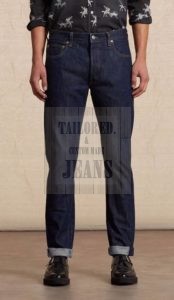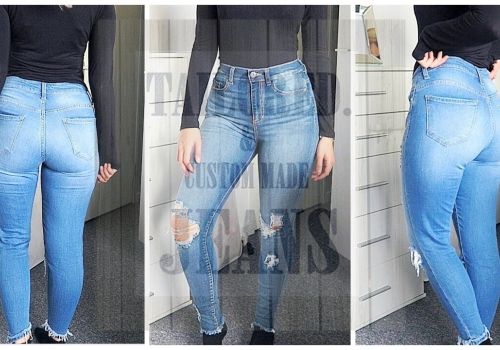UNDERSTAND YOUR DENIM
- Home
- Blog
- DESIGNER LAB
- UNDERSTAND YOUR DENIM
Denim Weight – What does this term mean and why is it so important – You may have noticed that some brands list different weights for different denim styles. You would notice on our website we have referred to the weight for all our fabrics.
The whole idea of categorizing a jean by weight comes from the weight a square yard of fabric weighs in ounces, which relates directly to the density of yarn woven in and the weight of said yarn. In simple terms – the weight refers to how much a yard of fabric weighs. For the sake of simplicity and considering the weight commonly used we have categorized fabric into three main categories:
Lightweight – under 11 Oz
Mid-weight – from 11 Oz – 12 Oz
Heavyweight – anything above 12 Oz
1. LIGHTWEIGHT DENIM – LESS THAN 11 OZ.

Lightweight denim is the easiest to wear category. It is suitable for warm temperatures and is very comfortable. Lightweight denim is particularly easy to break in as it won’t require anywhere near as much wearing time as a heavier fabric to attain a pleasant level of comfort.
The only drawback is that the fades achieved with this level of denim won’t look quite as spectacular as a heavier weight of denim. Also, their life would be lesser as compared to heavy denim.
2. MID-WEIGHT – BETWEEN 11 OZ. – 12 OZ.

This is probably the most common of the pieces of denim in the market today. The positives include the potential for a much better fade, long-lasting and good for winter. You will, however, take a longer break-in time, and will have a little bit of lost flexibility upfront. Standard denim jeans in the market are often 12 oz. They are also a great gateway for raw denim unless you are not interested in the break-in process.
3. HEAVYWEIGHT – ABOVE 12 OZ

Finally the heavyweight jeans, the over 12-13 Oz. jeans, which is rare in the market. They’re going to take time and effort and honestly won’t feel great at first. You’d have to be slightly self-loathing to want to stick your legs into a jean that can stand up on their own, but if you keep at it long enough you’ll be left with a very impressive reward. These can last you for a real long time, as they’re incredibly well built and hefty, but you’ll take up a bit of that life to break in enough to enjoy.
So lesser the weight, the lighter and softer the fabric will be. Traditionally, 11 to 13 oz. is most popular for denim jeans. Lightweights are more comfortable to wear, but it is heavier denim that results in sharper and more spectacular fades.
The weight does matter. The heavier the denim, the less likely it is to rip, tear or bend. Also, the longer it is going to take to mold to your body and break-in. So, the choice of denim weight is a personal decision
Most people want a jean that strikes a balance. Too lightweight and the fabric will tear too easily–too heavy, and the fabric will be as stiff as aboard. Most preferred is between 11-13oz.
The New Minimalism: How a Single Pair of Custom Jeans Can Anchor Your Fall Capsule Wardrobe
How to get yourself a perfect denim.
Beyond the Rip: The Rise of Refined Distressing in Custom Denim
How to wash and take care of jeans ?
ABOUT US
We are the global standard in custom-fit denim, meticulously crafted for unparalleled comfort and style. With decades of expertise, our commitment to precision tailoring and sustainable practices ensures every pair reflects our dedication to quality and your unique fit. Discover the perfect jeans, Making & Delivering Custom Jeans in USA and worldwide.
Tailored-Jeans.com: Crafting exceptional denim since 1996 in United States with an unwavering commitment to fit and quality. Discover our legacy.




